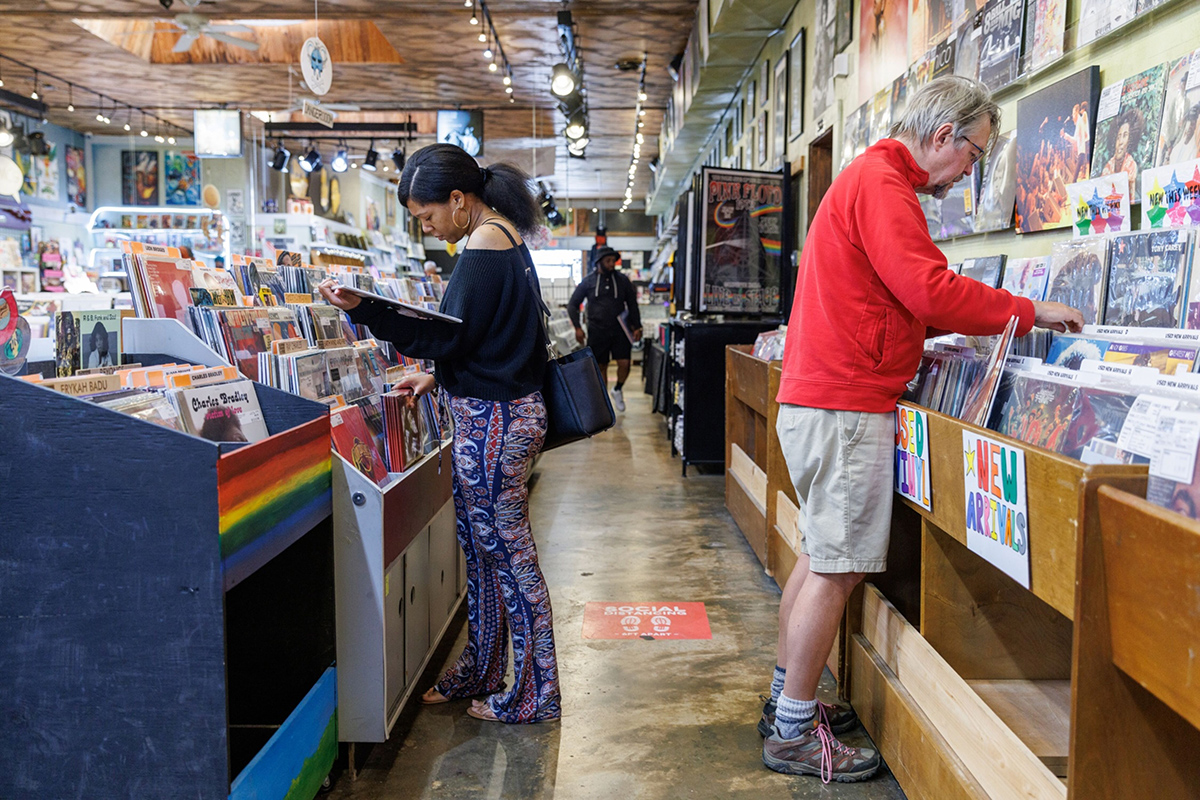 Shoppers browse albums at a record store in Atlanta, Georgia. Photographer: Dustin Chambers/Bloomberg
Shoppers browse albums at a record store in Atlanta, Georgia. Photographer: Dustin Chambers/Bloomberg
U.S. retail sales unexpectedly picked up in November, as lower gasoline prices allowed consumers to spend more to kick off the holiday shopping season.
The value of retail purchases, unadjusted for inflation, increased 0.3 percent, Commerce Department data showed Thursday. Figures for the prior month were revised lower. Excluding gasoline, sales rose 0.6 percent.
Recommended For You

A separate report Thursday showed applications for U.S. unemployment benefits dropped 19,000 last week to 202,000, the lowest level since October and near historic lows.
Consumers are holding in better than expected, particularly as they contend with lingering inflation and elevated borrowing costs. The labor market has continued to defy expectations for a slowdown, giving Americans the power to keep spending—especially as gas prices fall.
The data this morning are "stronger than expectedz, across the board," said Alex Pelle, an economist at Mizuho Securities USA. November is "clearly a strong month for U.S. economic performance after a soft October."
In retail sales, 8 out of 13 categories posted increases, led by restaurants and bars—the only service-sector category in the report—as well as sporting goods stores and online retailers. Gasoline sales dropped nearly 3 percent, as pump prices continued to fall in the month. Meanwhile, department-store sales declined by the most since March, reflecting tepid Black Friday shopping.
| Metric | Actual | Estimate |
|---|---|---|
| Retail sales (month-over-month) | +0.3% | -0.1% |
| Sales excluding autos & gas (month-over-month) | +0.6% | +0.2% |
| 'Control group' sales (month-over-month) | +0.4% | +0.2% |
So-called 'control group' sales—which are used to calculate gross domestic product—advanced 0.4 percent after stalling in the prior month. The measure excludes food services, auto dealers, building-materials stores, and gas stations.
A report earlier this week showed goods prices excluding food and energy declined for a sixth month in November, including declines for clothes and household furniture. That likely means the unexpected strength in the numbers reflected more purchasing activity.
What Bloomberg Economists Say…
"The robust November retail sales report suggests U.S. consumers continue to prefer to bargain-hunt online and are still leaning away from big-ticket and interest-rate–sensitive spending categories. In our view, that means while consumers are getting into the spirit of the gift-giving season, they're still feeling the pinch from higher prices and interest rates."
— Estelle Ou
The Federal Reserve decided this week to leave interest rates at a 22-year high, and fresh projections show a significant upward revision to economic growth estimates for this year compared with the September meeting. While officials expect the economy to cool, they're also forecasting a series of rate cuts, which should help support employment and spending.
The retail figures largely reflect spending on merchandise, limiting the takeaways of this particular report. Real spending on both goods and services for November are scheduled for later this month.
© Touchpoint Markets, All Rights Reserved. Request academic re-use from www.copyright.com. All other uses, submit a request to [email protected]. For more inforrmation visit Asset & Logo Licensing.



